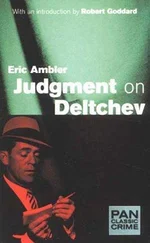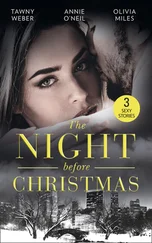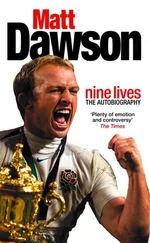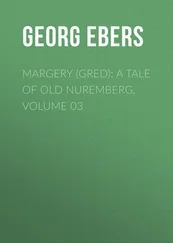“Let us assume, for the sake of argument, that it was nothing more than misinformation that made you a willing instrument in the organization of mass murder; there still remains the fact that you have carried out, and therefore actively supported, a policy of mass murder. For politics is not like the nursery; in politics, obedience and support are the same.
“And just as you supported and carried out a policy of not wanting to share the Earth with the Jewish people and the people of a number of other nations—as though you and your superiors had any right to determine who should and who should not inhabit the world—we find that no one, that is, no member of the human race, can be expected to want to share the Earth with you. This is the reason, and the only reason, you must hang.” [2] Hannah Arendt, Eichmann in Jerusalem : A Report on the Banality of Evil (Viking Press, New York, 1963), 279.
Observing the insouciant Germans in the dock on the final day, Stevens was not convinced that they had fully grasped the reality—the utter finality—of their situation. Not so the traitor Bulanov. “From the very start, the quaking fear that convulsed his frame and the wild horror in his eyes showed he knew full well the shadow of the gallows was upon him,” Stevens wrote.
In the back of the Germans’ minds, he said, may have been stories of an old Russian ruse—walking men into the shadow of the gallows before revealing at the very last moment that it was a grand bluff. “Apparently the illusion still persisted,” Stevens wrote, observing the Germans’ stolid demeanor (excepting Ritz’s tears at hearing the death sentence). The sentence was read about midnight; less than twelve hours later, it was carried out.
“Not until the following morning when they were hustled out of a Black Maria (police van) and saw the four erected gallows against the grey December sky, saw the close-packed crowd that thronged the marketplace, surging against the cordon of soldiers struggling to keep the space around the gallows clear—not till that moment did they realize the jig was up indeed,” Stevens wrote.
The market itself had been burned down by the Germans, leaving a wide expanse of rutted ground for a quartet of gallows made from freshly hewn wooden posts. Each gallows tree had a “trunk” some fifteen feet high with a cross beam on one side, forming a 7 shape, for suspending the rope. From each beam hung a noose and beneath it a one-ton military truck. On the bed of each truck were three stools made of white birchwood.
Clustered in an area near the gallows were members of the Military Tribunal, representatives of the Extraordinary State Commission which gathered evidence for the trial, Kharkov city officials, and a gaggle of Russian, British, and American correspondents. Guarding the VIP section were fur-capped Red Army soldiers with machine guns slung over their shoulders. Surrounding the island of elites was a sea of ordinary people—forty to fifty thousand, reporters estimated—in heavy coats, head scarves, and caps. Young people gathered on rooftops; others watched from windows. Soviet fighter planes patrolled the sky above the square. Newsreel cameras hummed.
At 11:15 A.M. a Black Maria entered the square and rolled to a stop near the gallows, lined up like telephone poles. The doors of the van opened and the four convicted war criminals, hands tied behind their backs, were led by soldiers toward the nooses. They were hoisted up onto the trucks and placed on the stools beneath the rope. They were not given blindfolds. Soldiers stood on the stools beside them to carry out the sentence.
“The Germans were in full uniform with epaulettes and ribbons and they wore forage caps,” wrote the correspondent for Reuters news service. “Capt. Wilhelm Langheld wore good-quality military trousers with high boots.” From his perspective, Stevens noted, “Three of the four prisoners had to be propped up. Bulanov had fainted. Ritz and Retzlaff turned pasty white; they drooled at the mouth, and their knees gave way. Only Langheld, the old soldier, remained stiff as a ramrod throughout, never once flinching.”
The Red Army attendants slipped nooses around the necks of the condemned men. Major-General Myasnikov, presiding judge at the Tribunal, stood on a platform to one side of the gallows. As the drivers of the trucks started the rumbling engines, Myasnikov read the sentences into a microphone, then ordered, “Carry out the sentence!” The trucks moved forward. The stools fell away and the ropes jerked taut. The killers hung in the air like resting marionettes, arms slack, heads lolling to the side. Cheers swept through the sea of onlookers.
“Langheld, Retzlaff, and Bulanov died within three minutes,” the Associated Press reported, “while Ritz twitched on the gallows for almost five minutes.”
I studied a close-up photo of the crowd. It’s impossible to know at which moment the photo was taken, but several people in front are looking up, perhaps at something dangling before their eyes. Here and there in the multitude is a haunted stare which seems to be focused inward, revisiting a private horror. But mostly I saw wide smiles, hands clapping, opened-mouth awe, joy, and, yes, unmistakable expressions of vengeance fulfilled—just a small down payment on imperfect justice, really, since these were only four among thousands of murderers who had perpetrated the mass slaughter and largely achieved Hitler’s goal of a Judenfrei Ukraine. There is a deep and melancholy irony to this snapshot: it is highly unlikely that any of the faces are Jewish. Most of the Jews of Kharkov fled before the Nazis arrived in 1941. Those who did not, like my mother’s family, were now in the ground at Drobitsky Yar. It was left to their non-Jewish countrymen, who had seen their city devastated by the Nazis, to celebrate this moment.
On December 19, 1943, my mother and her sister were in Berlin, where they had been taken a month before under heavy guard by the retreating Germans, who did not know that their prized Russian pianists were Jews. I’m confident that had she been in the marketplace in Kharkov with her liberated countrymen that day, my mother would have been among the celebrants. As I studied the frozen images of this judgment day, her bitter words about her mother and grandmother being forced to squat in the open ditches of the tractor factory came rushing back.
I wanted to put those who created this hell in the same place. That’s where I wanted Hitler and Himmler and Goebbels.
She would have settled for these gallows, I thought, and for these men—Langheld, Retzlaff, Ritz, Bulanov. If not these exact men, it was others like them, an army of faceless assassins dispatched by Hitler, who had pulled the triggers and buried her family with the sixteen thousand in the yawning pits at Drobitsky Yar.
I want to take all the leftover butchers, put them on the verge of a high and steep hill, put them on the edge of it, and then start the automatic guns. Not a tear would be lost by me.
Nor, I suspect, by the babushka in the headscarf I saw that December day sitting alone in the balcony of the conservatory, enveloped in sadness, as the student orchestra rehearsed Prokofiev, and later downstairs drifting ghostlike through the hallways in search, it seemed to me, of something precious taken from her long ago. I can’t give a name to it, the thing taken from her, but I believe I saw it in the smiling eyes of the young Ukrainian girl in terminal A at the Kiev airport, pirouetting across the floor, beaming, floating free—“Mama! Papa!”—at that moment in time, the happiest child I think I had ever seen.
In 2008 when I listened with amazement as NBC anchorman Brian Williams employed the lofty tone of expose for a report on “an invisible part of the Holocaust” in Ukraine—sixty-seven years after the well-documented and previously reported fact—he was following in the tradition of an icon of his profession, CBS broadcaster Edward R. Murrow.
Читать дальше












